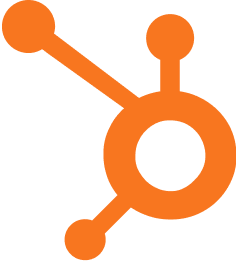A/B Testing Tools: Optimize Your Conversions

Published on: October 01, 2024
A/B testing tools are software platforms that enable marketers and product teams to compare two or more versions of a webpage, email, or app interface to determine which performs better. These tools are essential for data-driven decision-making in digital marketing and product development.
Why A/B Testing Tools Matter in Revenue Operations 📊
In the world of Revenue Operations, A/B testing tools play a crucial role in optimizing various aspects of the customer journey:
- Increased Conversion Rates: By testing different elements, you can identify what resonates best with your audience.
- Data-Driven Decisions: A/B testing eliminates guesswork, allowing teams to make informed choices based on real user behavior.
- Continuous Improvement: Regular testing enables ongoing refinement of marketing and sales strategies.
- Risk Mitigation: Test new ideas on a small scale before full implementation.
Key Features of A/B Testing Tools 🛠️
When evaluating A/B testing tools, consider the following features:
- Visual Editors: Easily create variations without coding knowledge.
- Statistical Significance Calculators: Determine when results are valid and actionable.
- Segmentation: Test different variations for specific user groups.
- Multivariate Testing: Test multiple variables simultaneously.
- Integration Capabilities: Connect with your existing tech stack for seamless data flow.
Popular A/B Testing Tools in the Market 🏆
Here's a comparison of some widely used A/B testing tools:
| Tool | Best For | Key Feature |
|---|---|---|
| Optimizely | Enterprise-level testing | Advanced experimentation platform |
| VWO | Mid-size businesses | User-friendly interface |
| Google Optimize | Small businesses | Free version available |
| AB Tasty | E-commerce | AI-powered personalization |
Best Practices for Using A/B Testing Tools 🎯
- Start with a Hypothesis: Clearly define what you're testing and why.
- Test One Variable at a Time: This ensures you can attribute results to specific changes.
- Run Tests for Adequate Durations: Ensure statistical significance before drawing conclusions.
- Consider Seasonal Factors: Be aware of how external factors might influence your results.
- Document and Share Results: Create a knowledge base for future reference and team learning.
Challenges in A/B Testing 🚧
While A/B testing tools are powerful, they come with challenges:
- Sample Size Issues: Ensure you have enough traffic for meaningful results.
- False Positives: Be cautious of drawing conclusions from statistically insignificant data.
- Over-Testing: Balance the need for data with the user experience.
- Technical Implementation: Some tools require developer resources for setup and maintenance.
The Future of A/B Testing Tools 🔮
As technology evolves, A/B testing tools are incorporating more advanced features:
- AI-Driven Testing: Automated test creation and optimization.
- Personalization at Scale: Tailoring experiences for individual users based on behavior.
- Cross-Device Testing: Seamless testing across multiple devices and platforms.
- Real-Time Results: Faster decision-making with instant insights.
To implement A/B testing effectively in your Sales or Marketing stack, ask yourself:
- What are our key conversion points that need optimization?
- Do we have the necessary traffic volume for meaningful A/B tests?
- How can we integrate A/B testing into our existing workflows?
- What metrics align best with our overall business goals for testing?
- How can we create a culture of continuous testing and optimization?
By answering these questions, you'll be well on your way to leveraging A/B testing tools to drive growth and optimize your revenue operations.
For more insights, check out abm tools and learn how to increase AOV.
















